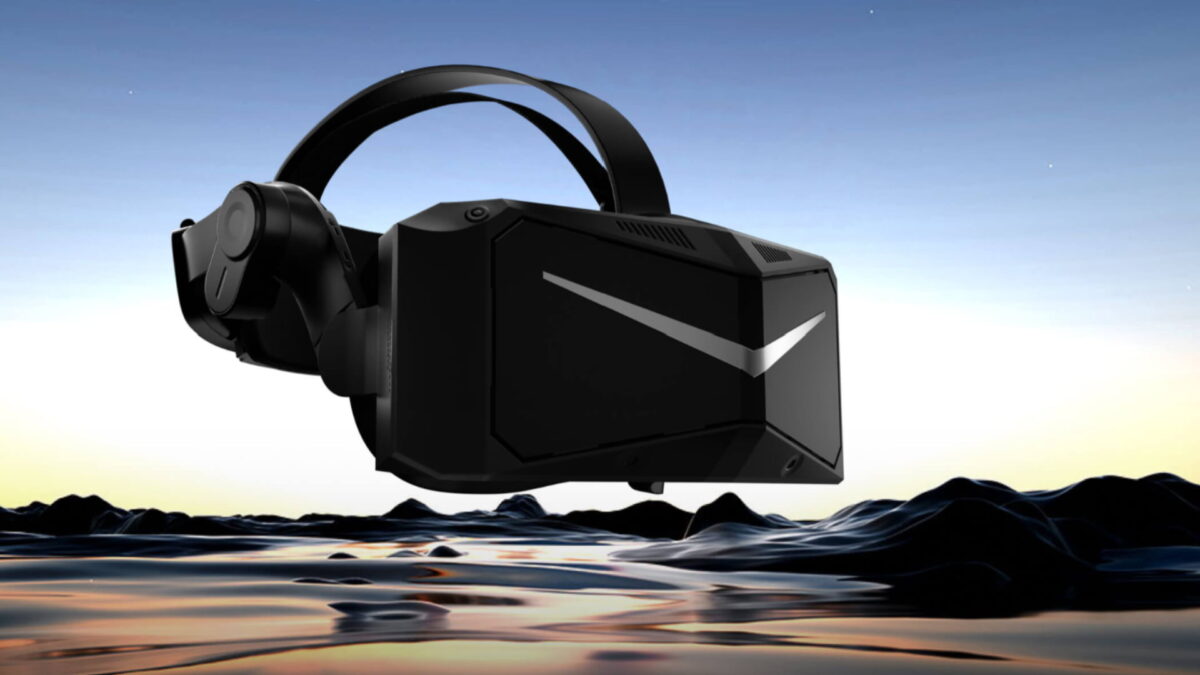Pimax standalone VR headset Crystal will be cheaper than expected

Pimax announces new details about the high-end Pimax Crystal mobile VR headset. The originally announced version is revised and the price is reduced.
In the Pimax Crystal launch event, Pimax showed off its upcoming mobile VR headset and announced new features compared to the first presentation in October. In addition to optimizations to the lens inserts, potential buyers should be especially happy about the price savings. The standalone high-end VR headset will be significantly cheaper than originally announced.
Content
Pimax Crystal: Lighter than the Pimax 8K X
It was only in October that Pimax announced its standalone high-end VR headset. Highlights include:
- Eye and face tracking,
- QLED displays with MiniLED backlight at 2,880 by 2,880 pixels,
- a refresh rate of up to 160 hertz,
- and aspherical interchangeable lenses with automatic IPD control.
Now there are more details. The Pimax Crystal comes with a Display Port 1.4, a connector, and a fifteen-foot streaming cable. Unlike the Pimax 8K X, the Crystal reportedly offers a narrower front and is "significantly lighter." Changes in material choice reportedly allowed the lower weight.
Replaceable battery at the back of the head
Included in the package is a quick-change 6000mAh battery that slides into the back of the head strap to act as a counterweight. Pimax promises a better balance of the VR headset as a result. Pico 4 (review) and Meta Quest Pro (info) also rely on a similar design.
Pimax wants to offer two exchangeable faceplates for the Crystal. The "Lighthouse Cover" available at the launch of the VR headset comes with all the necessary sensors for lighthouse tracking. The "Mixed Reality Cover" planned for post-launch relese includes cameras for a passthrough mode. This also makes it clear that the Crystal does not natively support passthrough.
The speakers attached to the frame support the DTS audio format and supposedly provide immersive sound. The controllers of the Pimax Crystal hardly offer anything new and resemble the touch controllers of the Meta Quest 2 (review) in design and layout.
Exchangeable lenses, Auto-IPD, and HDR
As already announced, Pimax does without Fresnel or pancake lenses for the Crystal. Instead, the VR headset comes with exchangeable, glass-coated aspherical lenses. According to Pimax, this should significantly reduce image distortions like God Rays, make images sharper, and increase the field of view.
Pimax offers different pairs of lenses with different characteristics. The 35PPD set delivers a wider field of view with 140 degrees diagonally, while the 42PPD variant provides a clearer image. When the Pimax Crystal was first introduced, the housings of the lens pairs were still attached with screws. Pimax has improved this. Each lens can now be inserted individually via a magnetic holder, and the screws are optional.
The Pimax Crystal automatically adjusts the lens distance between 57 and 71 millimeters. The VR headset's eye and face tracking help with this. There are buttons on the side of the casing for manual readjustment. The QLED displays of the Pimax Crystal supposedly offer richer contrasts and deeper blacks than comparable headsets like the Quest 2 or the Pimax 8K X via an HDR effect achieved by local dimming.
Pimax Crystal: PC VR mode via cable, WLAN, or WLAN dongle
For the wired PC VR mode, the included Display Port cable can be used. For wireless streaming, Pimax recommends WiFi 6E. There will also be an optional WiFi dongle for faster and more stable connections, as well as higher resolutions. "WiGig" supposedly runs latency-free at a distance of 15 to 24 feet from the PC and without noticeable drops in the refresh rate.
Also available as an option is the "Pimax Power Station." The compact and modifiable computer is optimized for VR content and supposedly plays the "most demanding RTX titles" currently available. A WiGig module is already preinstalled. Pimax does not yet provide any information about the price and technical details.
Pimax Crystal: Cheaper than originally announced
The company was able to reduce the originally targeted price of $1,889 by optimizing the delivery process and improving the availability of some components. The Pimax Crystal QLED Full Kit will now cost $1,599.
It includes the VR headset with battery, a 35PPD lens set, a display port cable and two controllers. Those who already own a Pimax VR headset can enjoy a $100 discount when buying the Crystal and get the Lighthouse faceplate for half the price.
There is still no concrete release date for the Pimax Crystal. In the coming weeks and months, Pimax wants to present the VR headset to a live audience at roadshows. Dates are yet to be announced.
Pimax wants to expand
In addition to the VR headset, Pimax also presented its expansion plans at the launch event. Again, Pimax did not get specific. According to Pimax USA COO Kevin Henderson, "Local Service Teams" and "Technical Support Teams" are to be established in North America over the next year. The Chinese company also wants to become more present in other, as yet unnamed, western regions.
"We've committed to that in the spirit that this expansion will be all about incorporating a large dose of Western DNA into all of our operations. That means we will be putting a heavy focus on personal attention for every customer," Henderson explains.
Note: Links to online stores in articles can be so-called affiliate links. If you buy through this link, MIXED receives a commission from the provider. For you the price does not change.